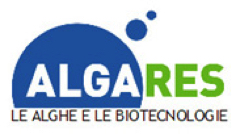Riccardo SALVIO
Professore Associato SSD: CHEM-05/A Chimica organicaStanza: G1 – 8
Biographical Info
07/1996 Maturità Classica (High School about humanities studies) at “Liceo Ginnasio Dante Alighieri”, Rome grade 60/60 (full marks).
07/2001 Master Degree in Organic Chemistry at University of Rome La Sapienza”. Graduated with full marks (110/110 cum laude) with a thesis titled “Cleavage of Carboxylic and Phosphoric Esters catalyzed by mono-, di- and trinuclear metallic complexes” under the supervision of Prof. Luigi Mandolini.
2005 PhD in Organic Chemistry at University of Rome La Sapienza under the supervision of Prof. Luigi Mandolini. Thesis title “Polymetallic Complexes Based on Calix[4]arenes as Artifcial Esterases and Nucleases”.
10/2003-12/2003 Visiting Scientist during the PhD period at University of Parma, Italy in Prof. Rocco Ungaro research group.
03/2005-01/2007 Postdoc at the Scripps Research Institute”, La Jolla, California, United States, under the supervision of Prof Julius Rebek Jr.
02/2007-02/2009 Postdoc at University of Twente, Enschede, The Netherlands, under the supervision of Prof. David N. Reinhoudt.
04/2009-08/2009 Postdoctoral Research Fellow (“assegno di ricerca”) at University of Rome La Sapienza
09/2009-09/2013 Researcher with a 4 year contract (fellowship “Rientro dei Cervelli”) at University of Rome La Sapienza, financially supported by MIUR (Ministry of Science and Education)
03/2015-06-2019 Assistant Professor (Ricercatore TDA) at University of Rome La Sapienza.
06/2019-05/2022 Assistant Professor with tenure track (Ricercatore TDB) at University of Rome Tor Vergata.
Since 06/2022 Associate Professor of Organic Chemistry.
Research Interests: Organic synthesis, physical organic chemistry, study of reaction mechanisms and supramolecular chemistry. Synthesis and study of catalytic properties of artificial enzymes based on calix[4]arenes. Synthesis and study of concave-shaped organic molecule that are able to host and selectively recognize other molecules. Study of the properties of encapsulated molecules by NMR spectroscopy. Synthesis and study of the electric properties of graphene-like monolayers immobilized on surfaces. Study of the efficiency of catalytic species immobilized on microreactor inner walls. More recently: design and synthesis of enzyme mimics based on the guanidinium unit. Development of new enantioselective organocatalytic processes for the formation of carbon-carbon bonds and the study of the mechanism involved in these transformations. Catalytic self-assembling systems in phosphoric diester cleavage. Conductive organic polymers.

 Descrizione attività
Descrizione attività Descrizione attività
Descrizione attività Descrizione Attività
Descrizione Attività Descrizione attività
Descrizione attività